For the past eight years, photographer Richard Ross has been documenting juvenile detention centers across the country.
He has visited more than 200 facilities in 34 states and been given rare access to interview and photograph more than 1,000 juveniles.
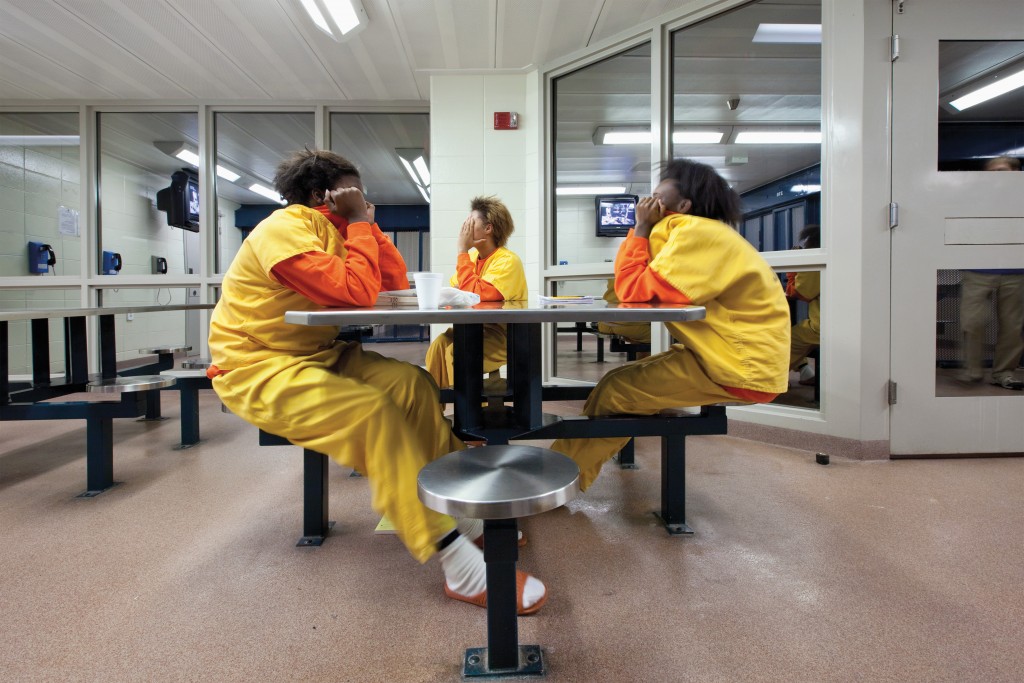
Three girls at a juvenile facility in Racine, Wisconsin. Roughly 30 percent of incarcerated youth in the United States are female.
The project has yielded two books, Juvenile in Justice, and the recently published Girls in Justice, which examines the daily lives of young females in detention.

A young girl sits in solitary confinement at Oak Creek Youth Correctional facility in Albany, Oregon.
In 2012, a collection of Ross’s photos that appeared in Harper’s magazine won the Best News and Documentary Photography Award from The American Society of Magazine Editors. The NewsHour also interviewed him that year.

R.K.D, age 17 at Ho’omalu Juvenile Hall in Honolulu, Hawaii
His latest collection of photos focuses solely on the girls who make up roughly 30 percent of the country’s incarcerated youth. They are the fastest growing segment of the juvenile justice population.

Courtyard, Los Padrinos Juvenile Hall, Downey, California
Ross said most of the young females he interviewed had remarkably similar stories. Few had committed serious crimes, and many had been the victims of either sexual or physical abuse before their arrest.
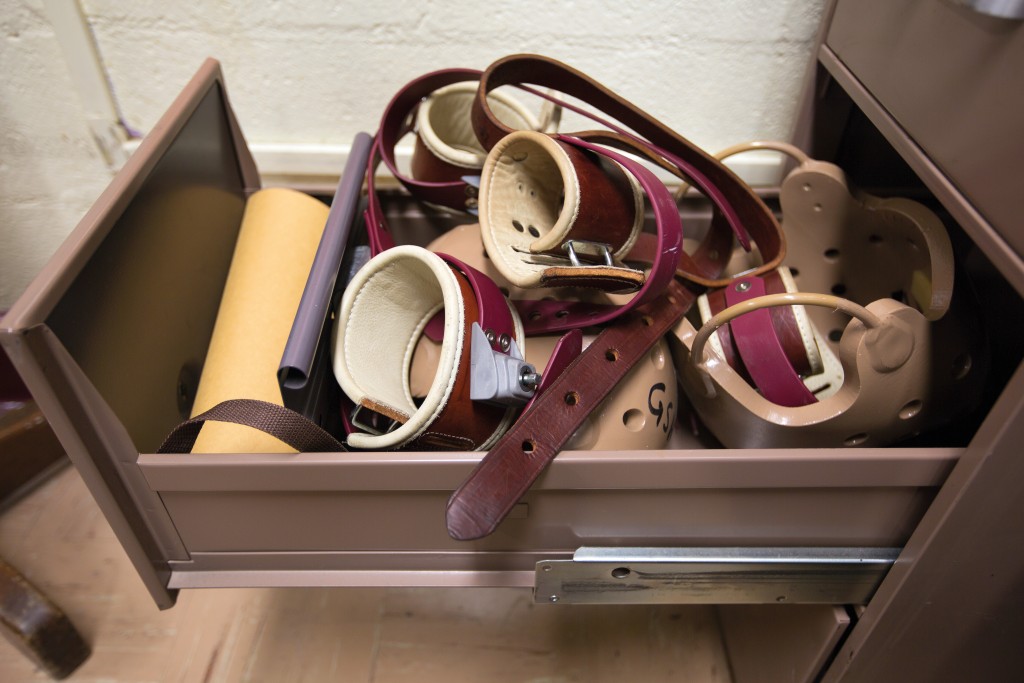
Special Handling Unit — Central Juvenile Hall, Los Angeles
“You talk to girls, and they’re in there for shoplifting, drug abuse, and probation violations,” Ross said. “It’s much different than the boys.”
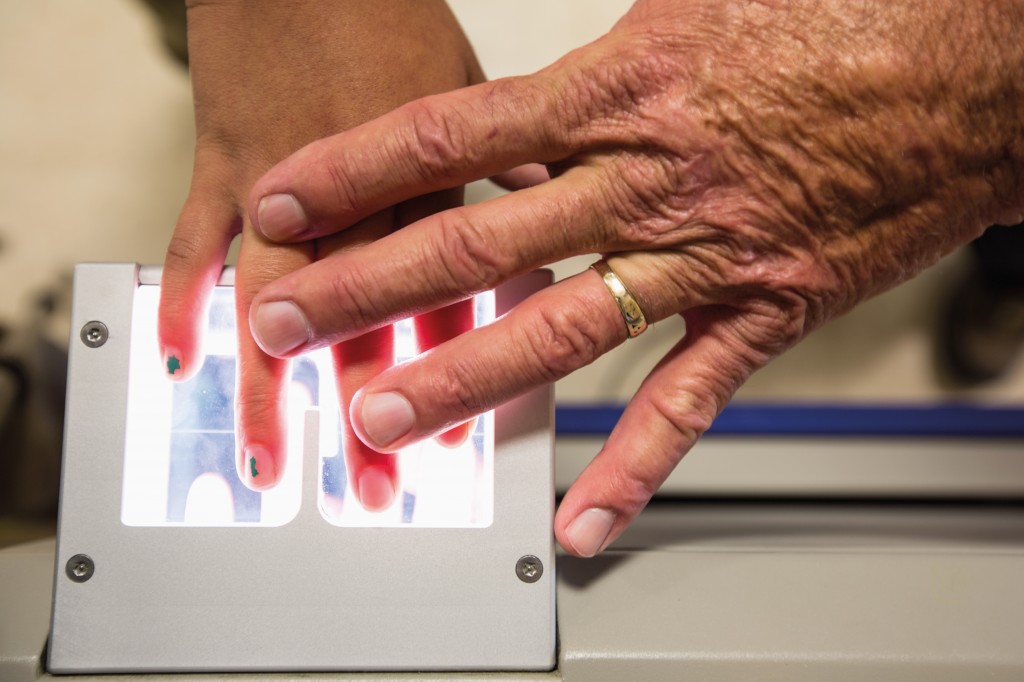
S., age 18 gets fingerprinted — Santa Maria Juvenile Detention Center, Santa Maria, California
Before taking any photos, Ross spends time talking with the girls in their cells, often for more than an hour.
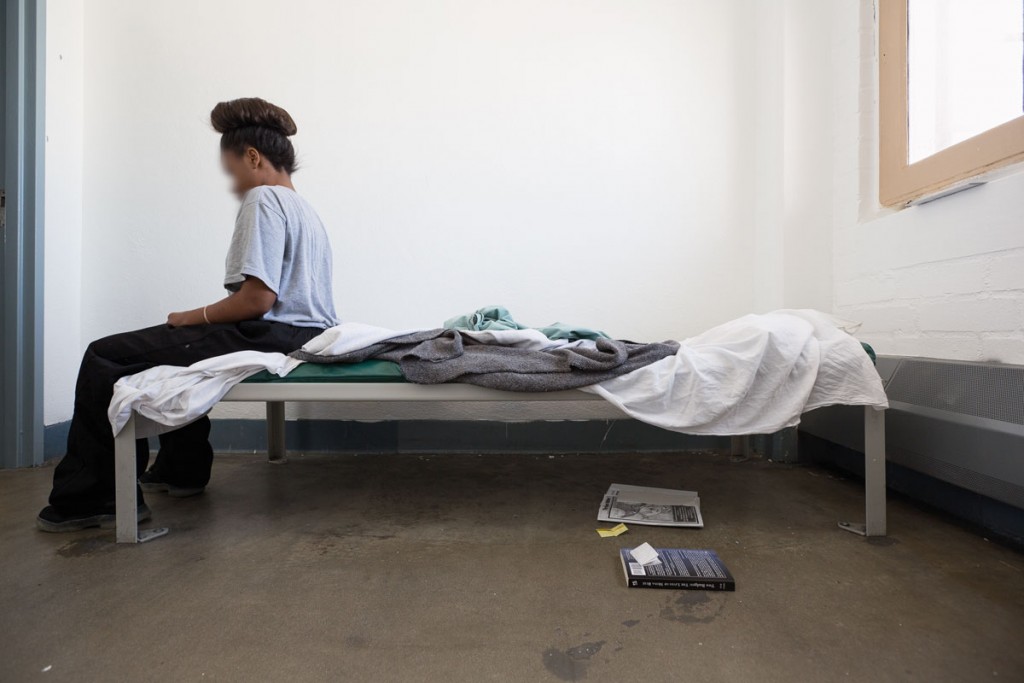
T.L., age 16 — Central Juvenile Hall, Los Angeles
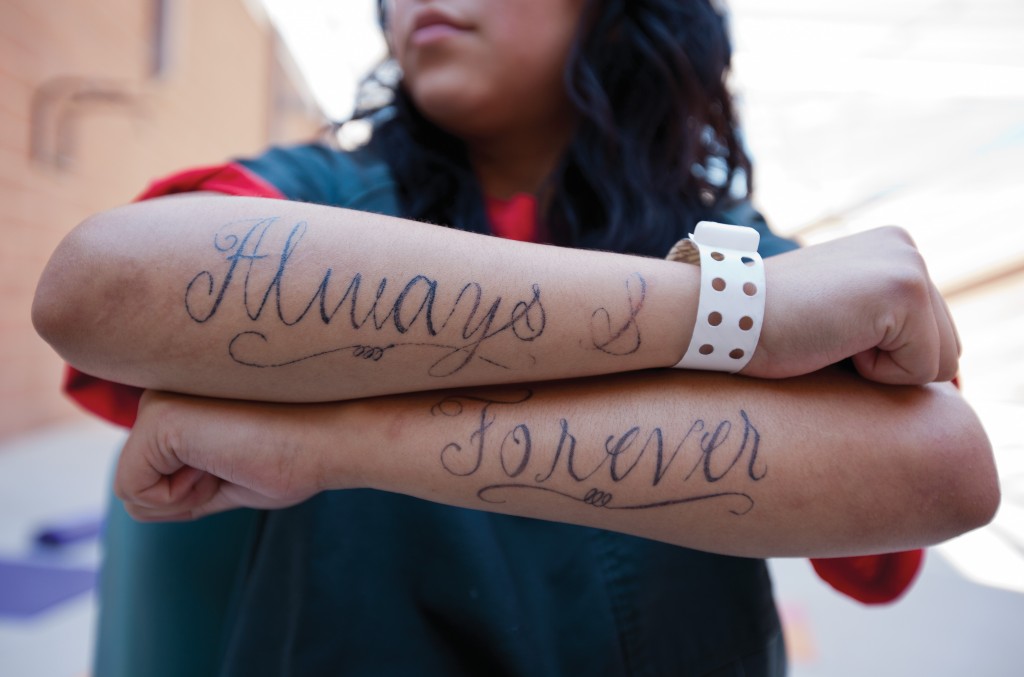
M.O., age 16 — Pima County Juvenile Detention Center, Tucson, Arizona
“I’m not a sociologist, I’m just the schmuck on the floor trying to make sense of all this,” Ross said.

J.C., age 16 — King County Youth Services Center, Seattle, Washington.

Girls line up in a hallway at Los Padrinos Juvenile Hall in Downey, California
Few adults, especially white males, have asked these girls about their lives, Ross said.
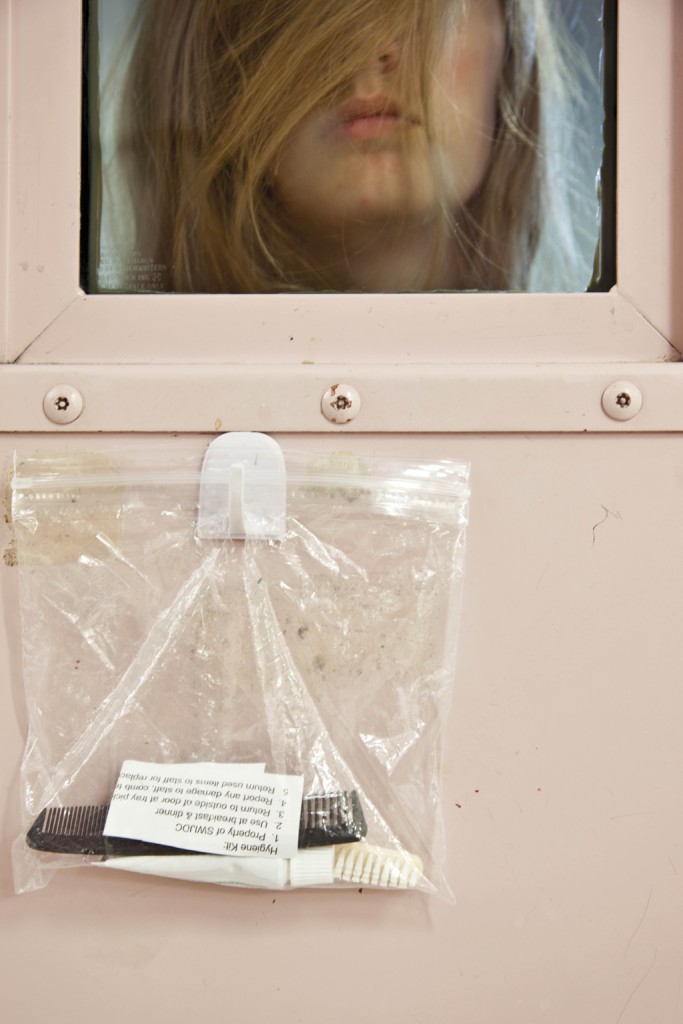
Girl with hygiene kit, Southwest Idaho Juvenile Detention Center, Caldwell, Idaho
“I have the advantage of being a stranger to their experience and gender, and they like to talk,” Ross said.

R.T., age 16, with her daughter — Postville, Iowa.
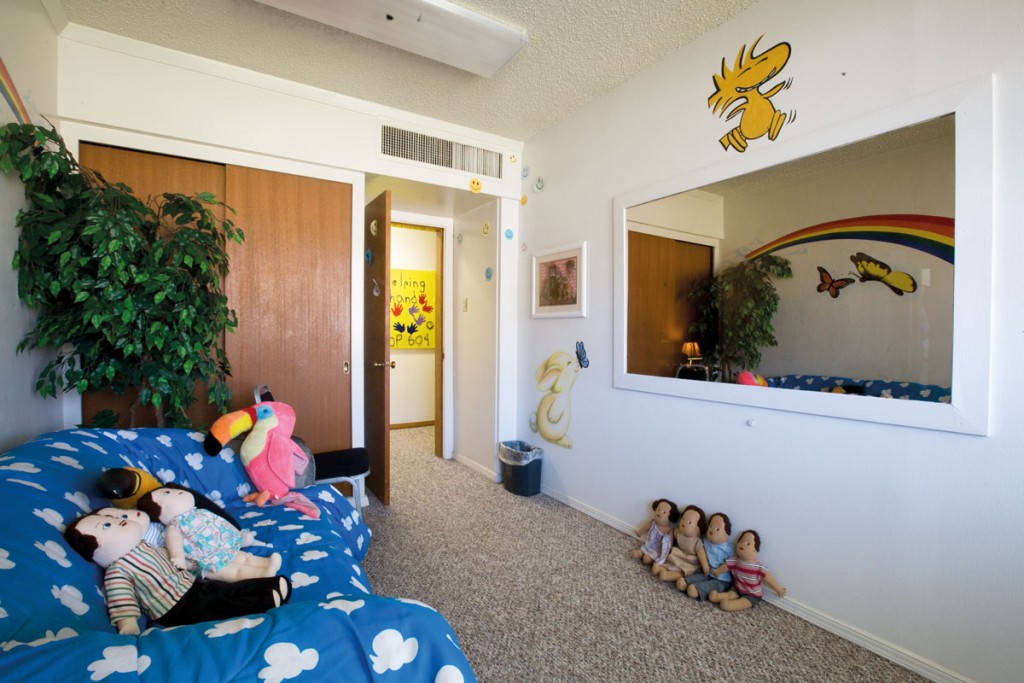
The Children’s Advocacy Center in El Paso, Texas provides counseling to kids who are suspected victims of sexual and physical abuse.
After building up trust and a bond, photographer and subject develop a plan together to capture a compelling portrait.
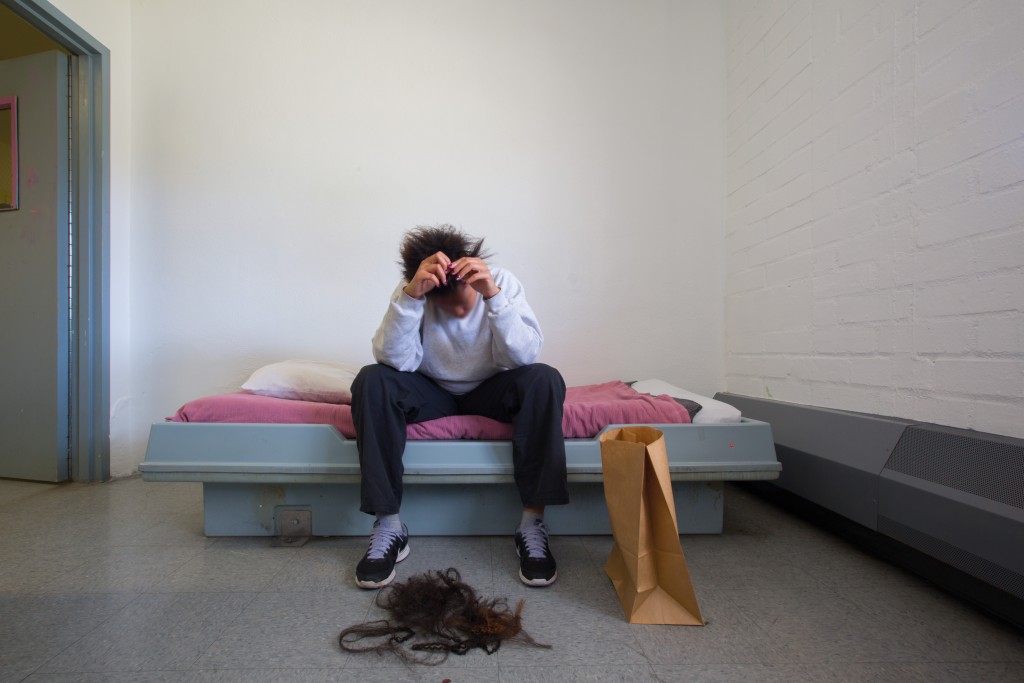
T.Q., age 16 — Central Juvenile Hall, Los Angeles
“With very heavy theatrics, I try to have them become co-conspirators with me to create an image without their face showing,” Ross said.

E.Y., age 11 — Juvenile Detention Center, Houston
The stories he’s heard have been heartwrenching. Among countless stories of physical, sexual and emotional abuse, one 14 year-old girl recounted being raped at age 3, another admitted to being suicidal.
When asked what surprised Ross most about his project, he didn’t hesitate: “How many times I’ve cried,” he said.
ncG1vNJzZmivp6x7sa7SZ6arn1%2Bjsri%2Fx6isq2eelsGqu81onqKqnKh6q8HSraCcnQ%3D%3D